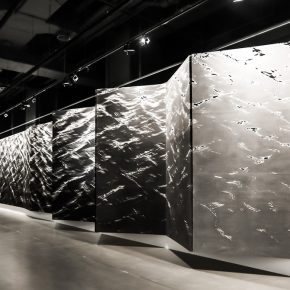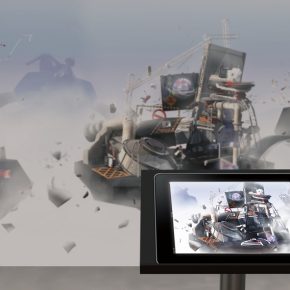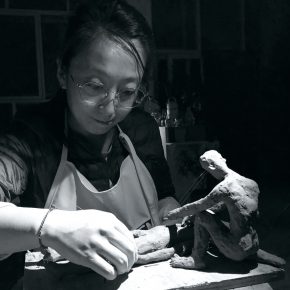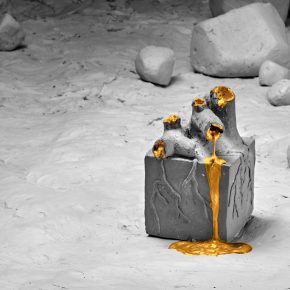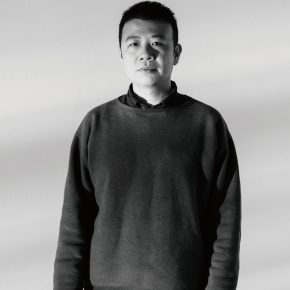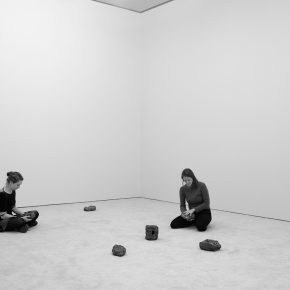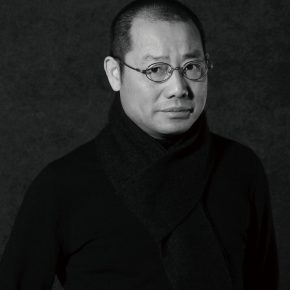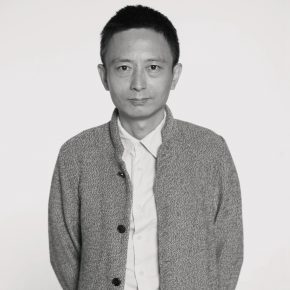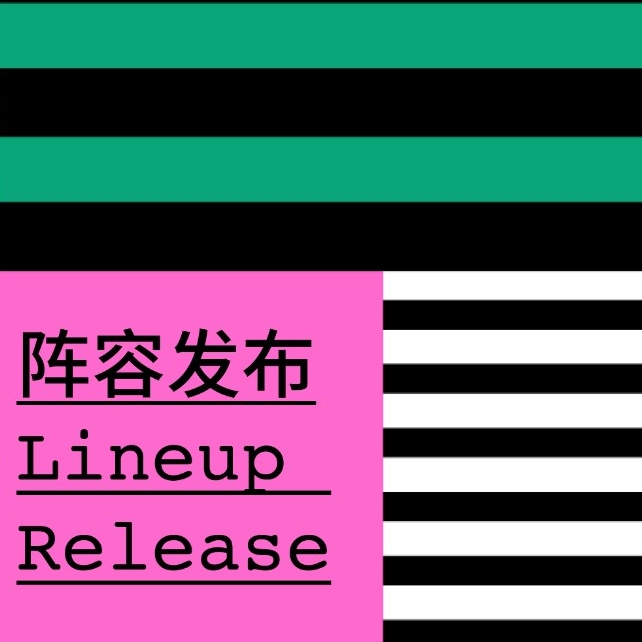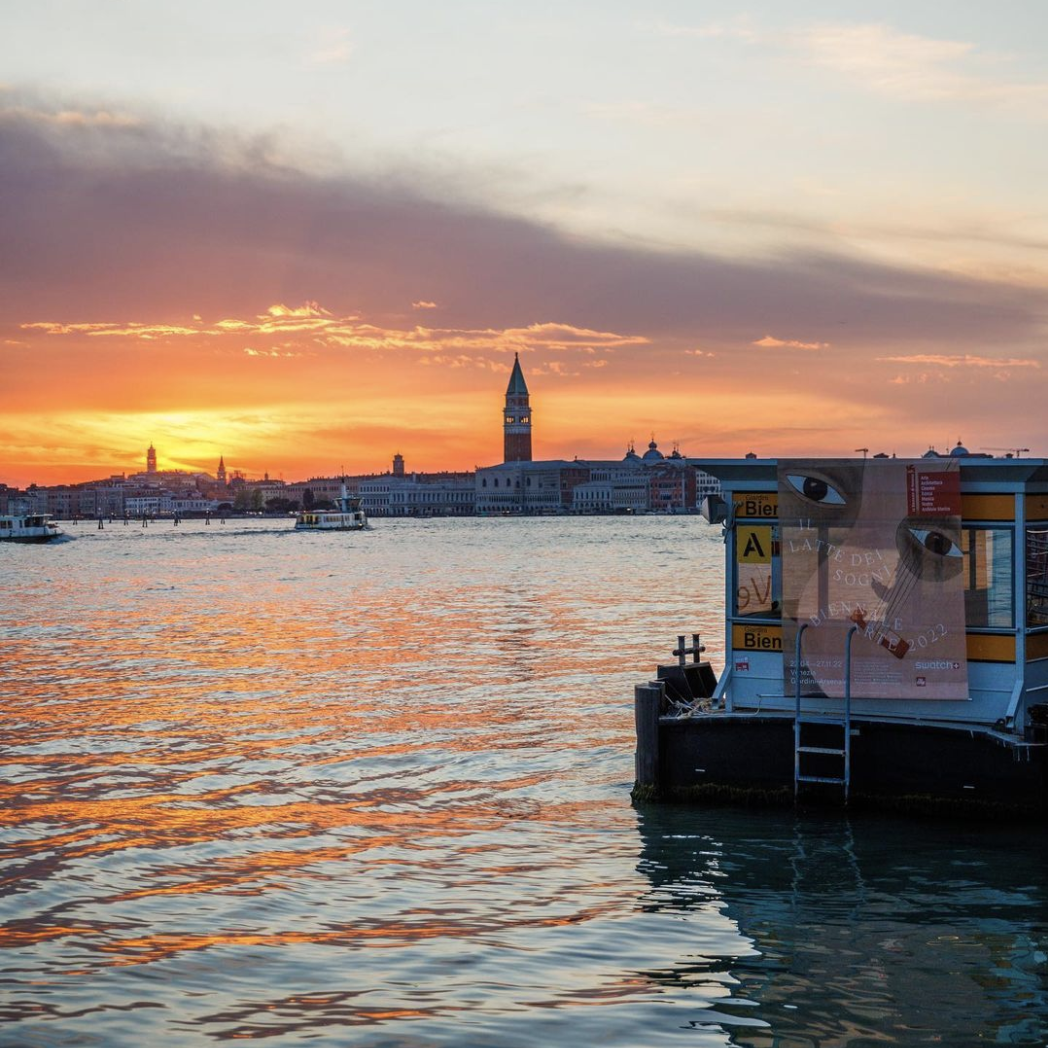
In February 2019, there was a test for the undergraduate entrance examination of the Central Academy of Fine Arts which required candidates to design a project with no restrictions on expressive forms and materials with the title “May You Live in Interesting Times” which is also the theme of the 58th Venice Biennale. On March 26, a press conference was held by the Pavilion of the People's Republic of China for the 58th International Art Exhibition: La Biennale di Venezia. At the conference it was officially announced that "Re-睿 (Rui)" is the theme of the Chinese Pavilion for the 58th International Art Exhibition, Venice Biennale 2019 and details of the participation program of the four artists were introduced. The exhibition is organized by China Arts and Entertainment Group Ltd. The curator is Wu Hongliang and the participating artists include Chen Qi, Fei Jun, Geng Xue and He Xiangyu. The exhibition will commence on May 11th, 2019 and conclude on November 24th, 2019. We cannot know the replies from the candidates or future art students, but we can comprehensively know the reply of Curator Wu Hongliang to this theme.
The Venice Biennale 2019 will carry the title “May You Live in Interesting Times”, which is open to different types of interpretation. Its Chinese version can also be understood as “just the right time”. Today, China has entered a new era that emphasizes creativity and innovation. With a long history of art and culture, China, together with many other countries in the world, now faces complicated opportunities and challenges in the context of globalization. The Venice Biennale is a grand gathering of artistic ideas from all over the world. The Chinese Pavilion serves as an international platform to showcase China's cultural proposition and self-confidence in the new era. This year, in step with the pulse of the times, the exhibition will integrate innovative techniques into the traditional logic of Chinese art. We will assume a more open and inclusive attitude toward the interactions between art and the times, and between art and the public, to explore new perspectives and new mindsets in art to benefit people’s lives.
From "Re" to "睿"
"Re-睿", the theme of the Chinese Pavilion, stems from rethinking the title of this Venice Biennale. In the first half of the 21st century, the term "interesting times" indeed has some implications. Ranging from the information in the media to our daily lives, every individual is more or less aware that humans seem to be facing so-called "new problems".
The theme "Re-睿" is the response of the Chinese Pavilion to the “interesting times” that we are already participating in. “Re” is a prefix frequently used in various Western languages. It has the meaning of “back” or “backward”, adding a retrospective sense to the root word it proceeds. “睿” is a character in Chinese that has similar pronunciation, meaning wisdom. In the face of today's new problems, we may need to gain insights from "Re" and "睿". The curator Wu Hongliang hopes to present both virtual and real perspectives at the exhibition, and provide a path for the viewers to return to their hearts. The exhibition hall is arranged like a long three-dimensional scroll of Chinese painting. The interesting point is that you cannot view the whole scroll at once. Wandering in the exhibition hall is like unfolding the scroll, with changing views and varying experiences for the spectators to sense with their hearts.
In short, this exhibition is an artistic journey of multi-sensory activation and spiritual comfort. By proposing the theme "Re-睿", the curator wants to strengthen that "睿" (wisdom) comes from "Re", which is also a way of thinking about contemporary art. The curated artworks at the exhibition will provide a retrospect of the common issues in civilization that reflect our daily lives as well as our personal perceptions and re-examine the shared experience in the development of human civilization. By looking back, what kind of wisdom can be gained for the current "interesting times"?
Finding the Chinese Pavilion in Venice
The Chinese Pavilion is located in the deepest part of the Arsenale area. It is easy to get lost in the winding lanes of Venice and its intricate network of waterways and bridges. Chinese artist Fei Jun has created a mobile app "Re-Search", which is also one of the artworks curated for the exhibition. This app combines the navigation function with an artistic re-creation of the bridges in Venice. It not only compares similar bridges built over the years but also guides visitors to the Chinese Pavilion. Upon entering the Chinese Pavilion, the viewers need to walk through a narrow passageway. On the right side of the passageway are the mottled ancient brick walls of the Arsenale, while on the left side is a growing virtual world that interacts with the spectators and players. This virtual game, named "An Interesting World" is both simple and complicated, full of entanglements and co-creation. The various worlds created by different players can be connected by bridges, allowing for communication with each other.
Leaving behind the virtual game zone that provides a contrast between history and the future, viewers will come to a small open square. Walking up to a small arched bridge on one side of the square, visitors will be standing at a commanding height of the entire exhibition hall, overlooking "The Name of Gold", an image installation created by artist Geng Xue. The installation is 10 meters high and 4 meters long, playing a video in black and white that reflects the female artist's perception of life and reincarnation. Towards the end of the video, a golden ship appears in the vacant black-and-white world, in concert with several golden devices on the ground that look like "water splashes" or "umbilical cords" to present images of a golden figure floating, disintegrating and vanishing…Water is the key theme of this area. Whether you are on or under the bridge, you will see the huge, super-realistic, black-and-white watermark woodcut prints by artist Chen Qi, which is named “The Born and Expansion 2012". Approaching this artwork, you will get immersed, feeling your body and mind swaying gently as the water ripples around you.
The spectators can walk through the bridge and enters a narrow lane that leads to a completely unexpected pink space. This is the installation work by artist He Xiangyu, named "Everything We Create is Not Ourselves". The work is an externalization of the tactile perceptions inside the human body. For example, the artist touched his upper jaw with his tongue, and then translated the tactile sensation into a bronze sculpture. He has spent many years visualizing such perceptions like keeping track of daily routines. Viewers can sit down and touch the sculptures to share the tactile perceptions of the artist.
Now it is time for visitors to experience the beauty of this garden-like enclosure. They can either walk through the pink space and pass an archway back to the small square where Geng Xue’s work is showcased or return to the exit under the bridge and turn right to find mottled light showering down through engraved holes overhead. This is the spatial installation of artist Chen Qi, named “Elsewhere”. The shapes of the holes are an imitation of wormholes in an ancient book eaten away by bookworms, metaphorizing the conflict as well as the harmony between human civilization and nature. Walking out of this dark alley, viewers will enter the bright outer space of the Chinese Pavilion. There is a pale-pink box installed on the lawn. The inside of the box is a tranquil space with sunlight penetrating the "wormholes". This is a gift from China, where spectators can look around or stay for a while.
If visitors happen to enter the Chinese Pavilion through the entrance of the garden, they can experience the unfolding of the scroll from the other end. This is another interesting aspect of the Chinese Pavilion.
Multidimensional experience inspired by interaction
“Re” is not only the reflection and self-expression of Chinese artists in response to history, society and the current “interesting times”, but also the exploration of new kinetic energy in terms of techniques, styles, themes and concepts. The power of art is demonstrated as an insight and influence on the world, which also depends on viewers' understanding of the specific details in its form and content. Therefore, techniques are particularly important in exploring profound perceptions. The use of new techniques is not only for the purpose of enhancing the spectators’ experience and sense of participation, but more importantly to address the language and cultural expressions of contemporary art, to allow audiences at different levels to reach consensus on common cognitive problems. To this end, the Chinese Pavilion combines psychological research and big data with the works of various artists to broaden the boundaries of the exhibition. The work of Mr. Fei Jun, “Re-Search”, has a navigating function that can guide viewers to the Chinese Pavilion. In addition, the curator has cooperated with the Chinese Academy of Sciences to produce smart wristbands for selected visitors. Once linked to a spectator’s mobile phone, the wristband can monitor the spectator’s emotional state based on physiological data during their visit, and convert it into a unique psychological image based on Chen Qi's artwork, which then becomes a souvenir of the trip. In parallel with the Venice Biennale, the curator has also established a number of “remote pavilions” across China, where information about the Venice Biennale will be shared and visitors can appreciate its beauty from far away. These outdoor installations will be integrated with solar technology to make them more energy efficient. Of course, as an ordinary visitor, even without the "plug-in" of mobile phones and wristbands, you can still enjoy the multidimensional experience in the exhibition hall from artworks including "An Interesting World", "The Name of Gold ", "Elsewhere", " Everything We Create is Not Ourselves", and even from the double-loop structure of the exhibition space.
In conclusion, with the advent of the era of globalization, different countries, nationalities and cultures are facing the escalation of certain common problems. The Chinese Pavilion uses the interactive experience to highlight this common issue and the humanistic spirit of artistic ontology. The achievements in different fields are integrated into the artworks and the exhibition, which perfectly reconcile the East and the West, the traditional and the contemporary, the virtual and the real, to construct a field of perception for viewers to think about themselves as well as the world and “interesting times”.
Editor’s Comments:
The curatorial programs and exhibits of the highly anticipated Venice Biennale China Pavilion have not been officially presented in a specific visual way, but from the presentation at the conference, the intervention of technology and the imaging and installation of the exhibition, it indicates that this will be a full-scale exhibition with a “contemporary feel”. While reviewing Wu Hongliang's resume, the most familiar role is that he is the curator of the Museum of Beijing Fine Art Academy and he has been engaged in the study of Chinese art history in the 20th century. Therefore, he has confronted such a challenge: "How does a scholar who focuses on the art of the 20th century curate the Chinese Pavilion for the Venice Biennale?" Reviewing the past history of curators for the Chinese Pavilion at the Venice Biennale, such doubts are not groundless.
Born in 1894, the Venice Biennale began to accept the entries of Chinese artists in 1993 and started the Chinese Pavilion of the Biennale in 2003. It is not difficult to find that from 1993 to 2003, and from 2003 to the present, the participating works of Chinese artists experienced great changes. In the previous stage, the Biennale led by European and American curators focused on choosing Chinese artworks represented by paintings. After the establishment of the Chinese Pavilion, it began to adopt the Chinese judging mechanism and chose curators to represent the country and its own position. Curators, leading Chinese artists now appear on the international stage representing Chinese contemporary art. Nevertheless, the choices of curators and exhibitors in the Chinese pavilion are still in the midst of criticism from the Chinese art world. For example, curator Lu Hao was criticized for his lack of curatorial experience and international influence. Later, in 2017, curator Qiu Zhijie invited intangible cultural heritage inheritors to present the exhibition, which aroused controversy to some extent.
Making a choice is a difficult thing. We must not just display the image and style of "China" in the right international discourse, but we also should take into account the "contemporary" language forms and expressive methods in the content of thought. This kind of contradiction from the system itself is first of all a problem within the reference system. It is a paradox itself to measure itself by the standards of others. How to break the public opinion seems to be caught in the dilemma of "the chicken or the egg". When removing ourselves from this framework, we see another deep question, "What is contemporary art?" Pioneering? Conceptual? Contemporary creations? Discussions on this issue always assert that they are reasonable and there are also many works that are called “contemporary art” which seem to be less qualified. In the current rapidly developing global context, perhaps only a profound reflection on Chinese contemporary art can find a way.
Let’s return to Wu Hongliang, who was mainly engaged in the study of Chinese art in the 20th century. In fact, he paid attention to and entered the contemporary era in his own research practice and curatorial experience. At the press conference, when faced with the reporter's question "what is the source of curatorial ideas for this garden-style exhibition?" he talked about it from his original starting point from exploring the garden in the From the Canglang Pavilion he created in 2018. The space and the theme of the exhibition told the contemporary value between classical gardens and humanistic spirit and artistic creation. Wu Hongliang also spent a long time or an equal amount of time on studying pre-1985 art, researching the scholars and artists of that period. He believes that studying the 20th century is a study of the pre-history of contemporary Chinese art. He stated that: "Chinese contemporary art is not produced in an instant, or for no reason."
The "case of Ye Yongqing", which continued to ferment has pushed the problems confronted by Chinese contemporary art to a peak. Facing the current “interesting” crisis era mentioned by the two curators, perhaps as Wu Hongliang said: "It should be solved in a smart, intelligent way."
Courtesy of the organizer, edited and commented by Yang Zhonghui (CN) and Sue (EN)/CAFA ART INFO
Photo by Hu Sichen/CAFA ART INFO



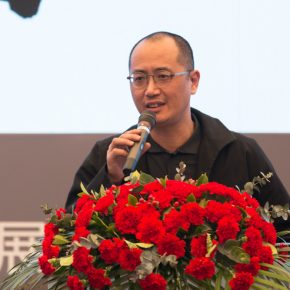
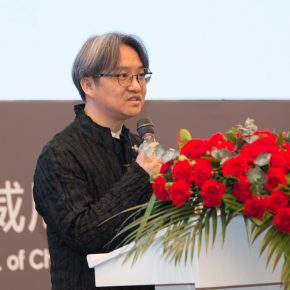

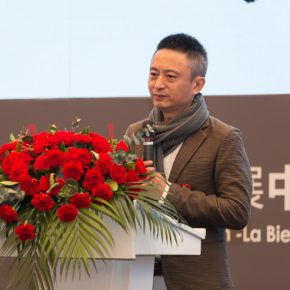
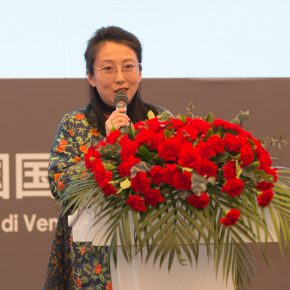
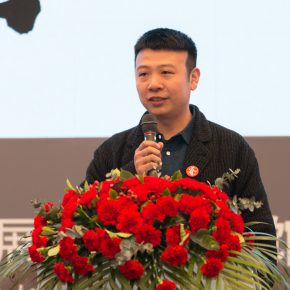
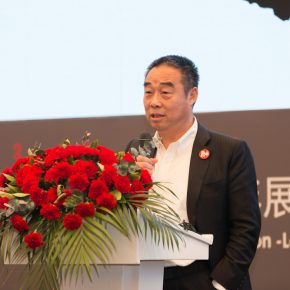
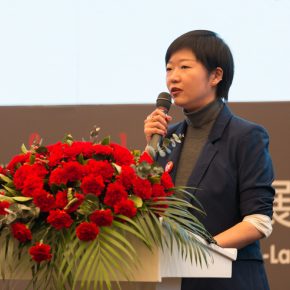
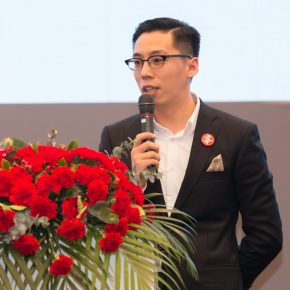
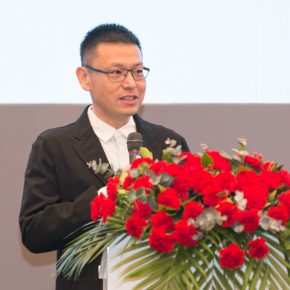
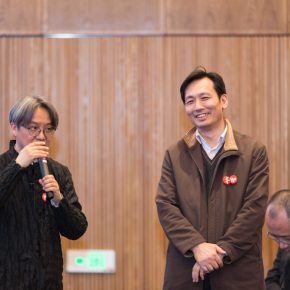
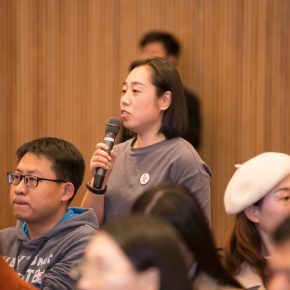




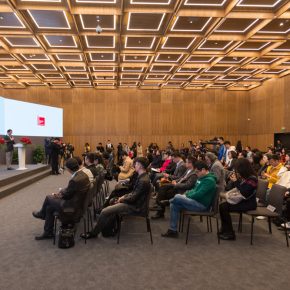
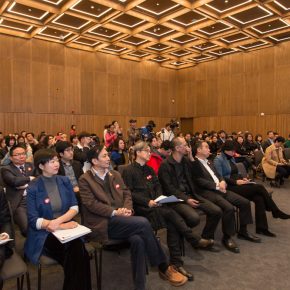
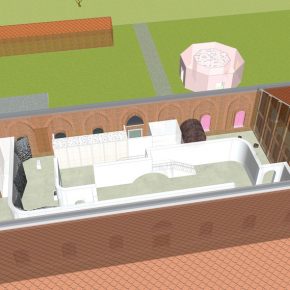
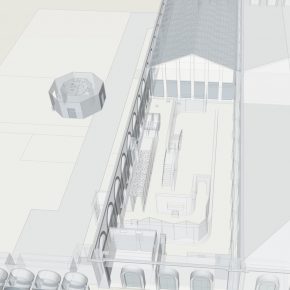
-290x290.jpg)
